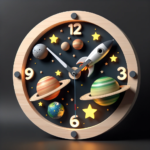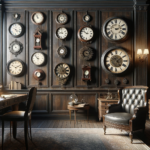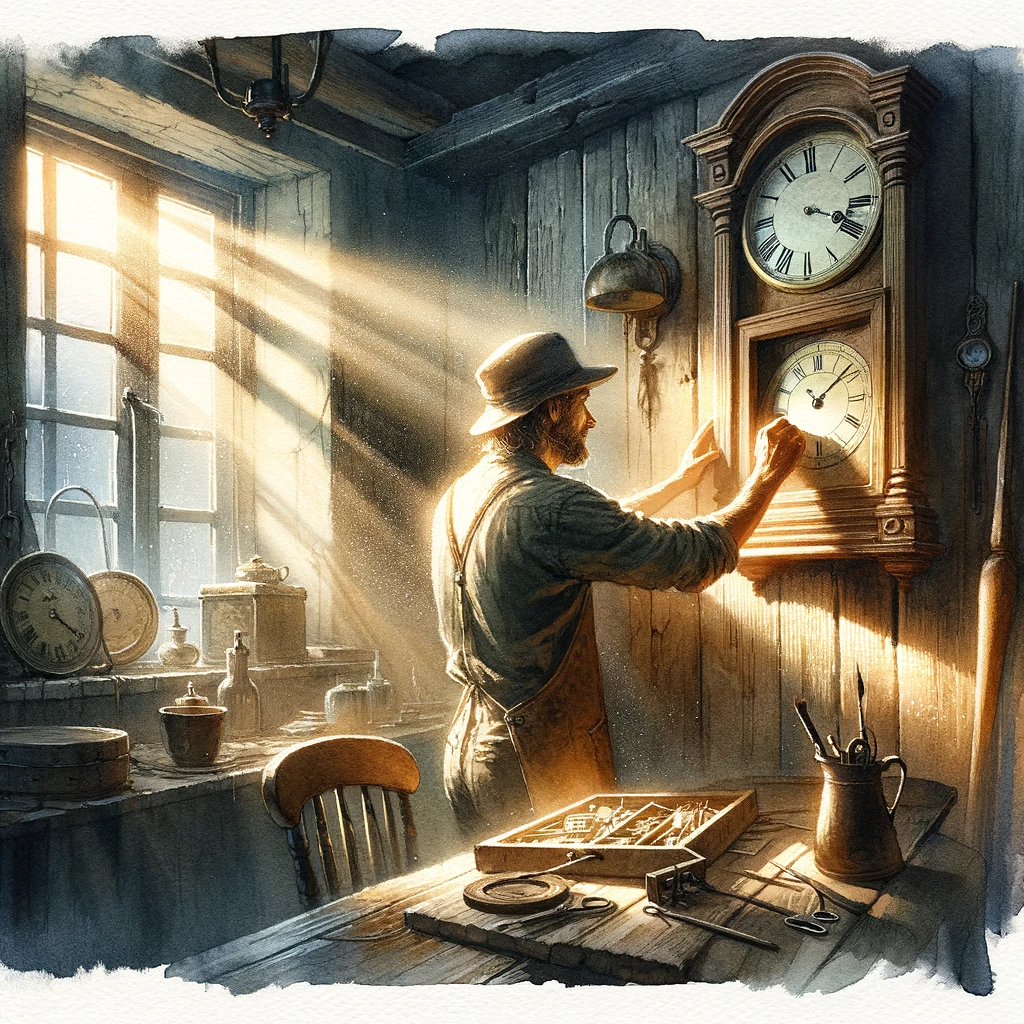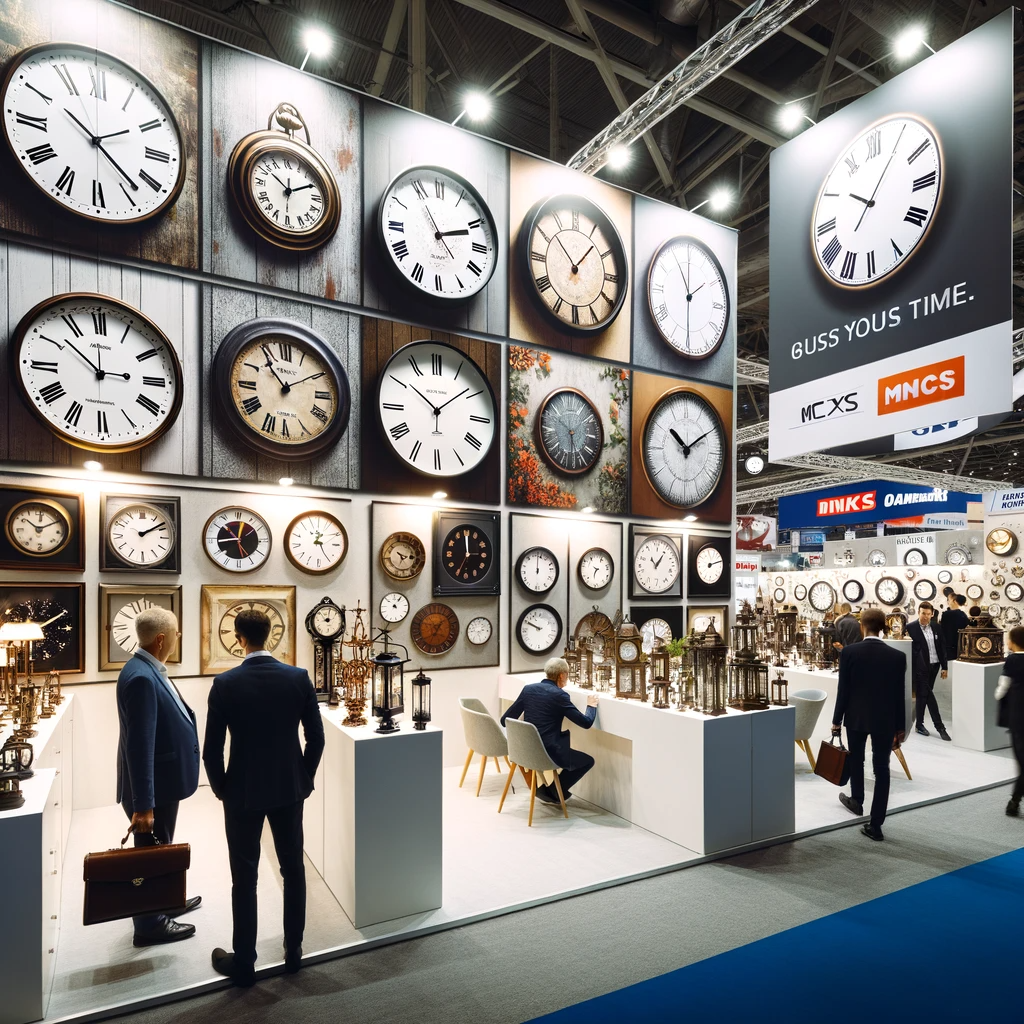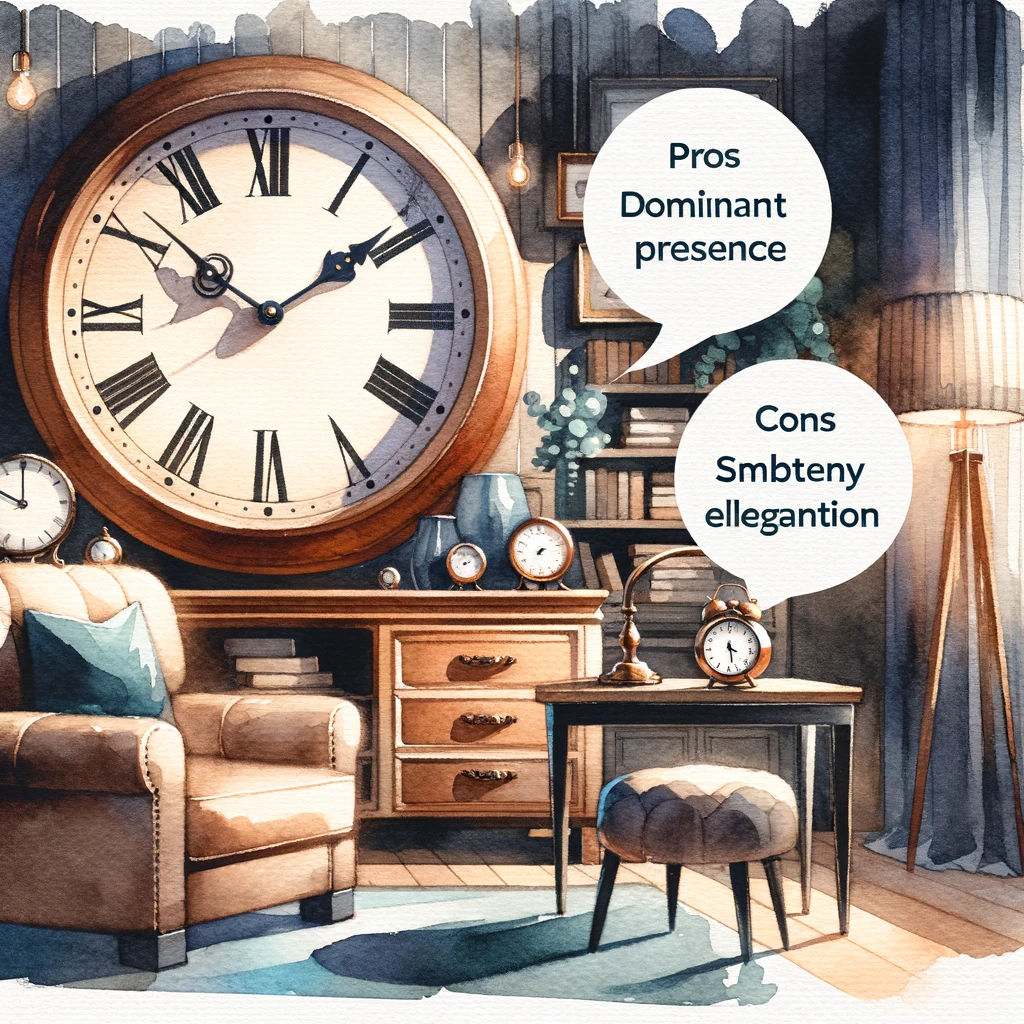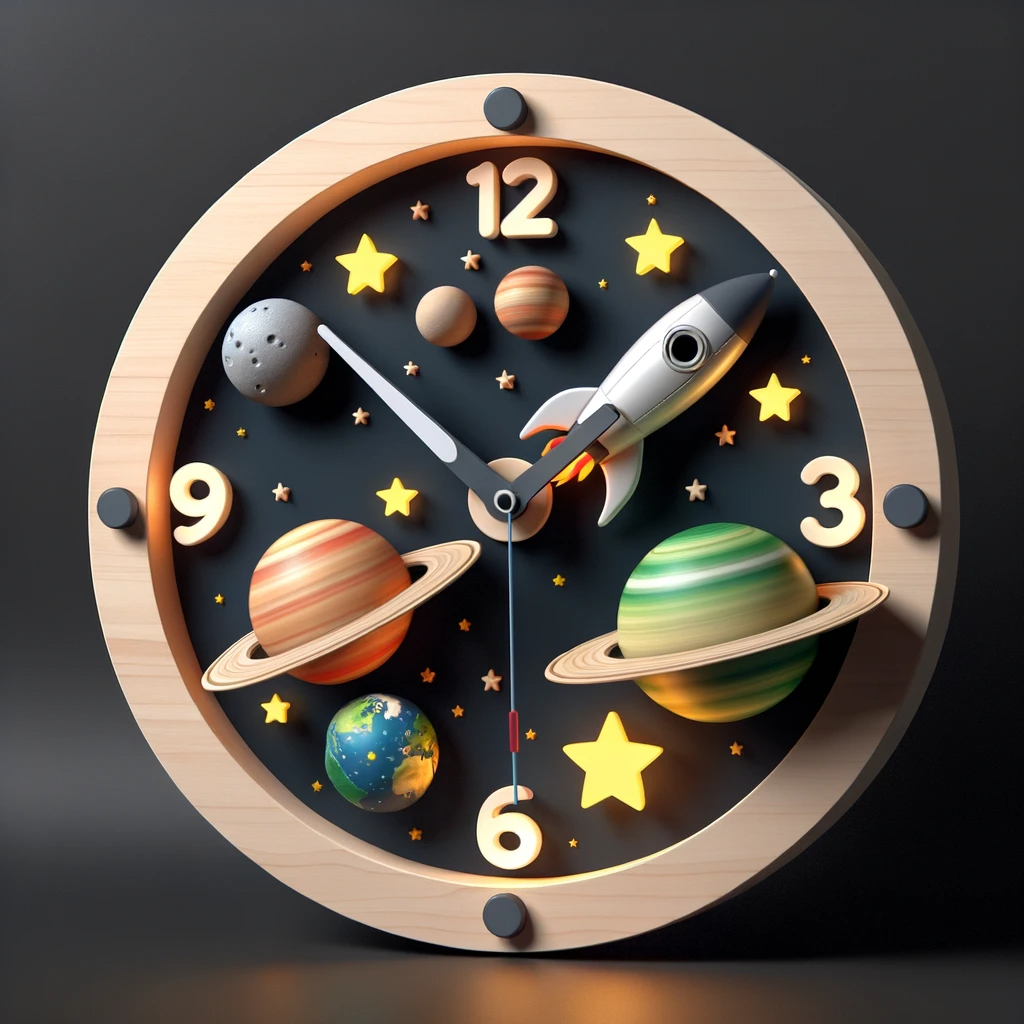Introduction
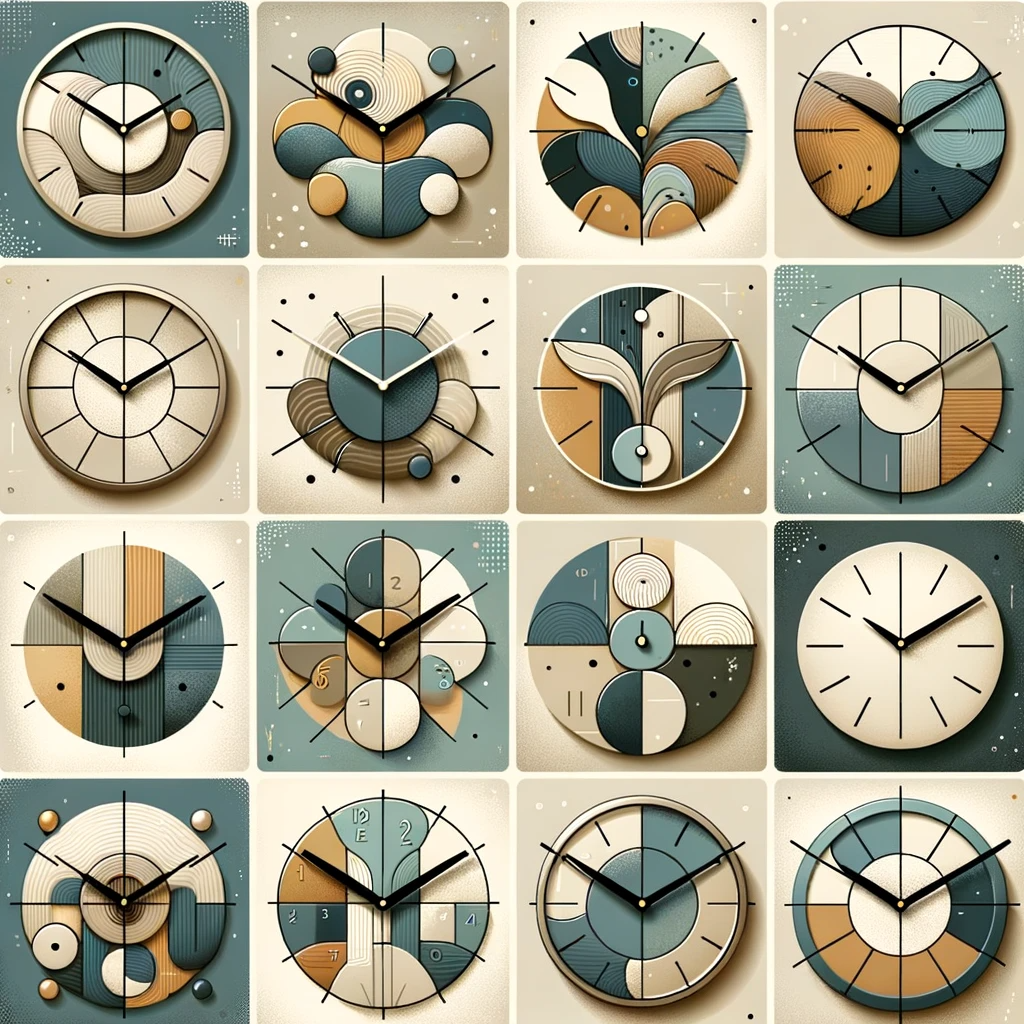
Defining Wall Clocks
Wall clocks are timekeeping devices designed to be hung on walls. They consist of a clock face, which displays time using hour and minute hands, and numerals or markers indicating hours and minutes.
The Functional and Decorative Importance of Wall Clocks
Wall clocks serve a dual purpose as both functional timekeeping tools and decorative pieces within a space. Functionally, wall clocks provide an easy way to keep track of time, allowing individuals to schedule their activities efficiently.
Whether it’s monitoring cooking times in the kitchen or ensuring punctuality for appointments, wall clocks play a crucial role in our daily lives. Furthermore, wall clocks have significant decorative value within interior design.
They add visual interest to walls by serving as focal points or complementing existing decor themes. The choice of wall clock style can contribute to the overall aesthetic of the space, whether it be traditional, modern, or contemporary.
The Transition from Traditional to Modern and Contemporary Designs
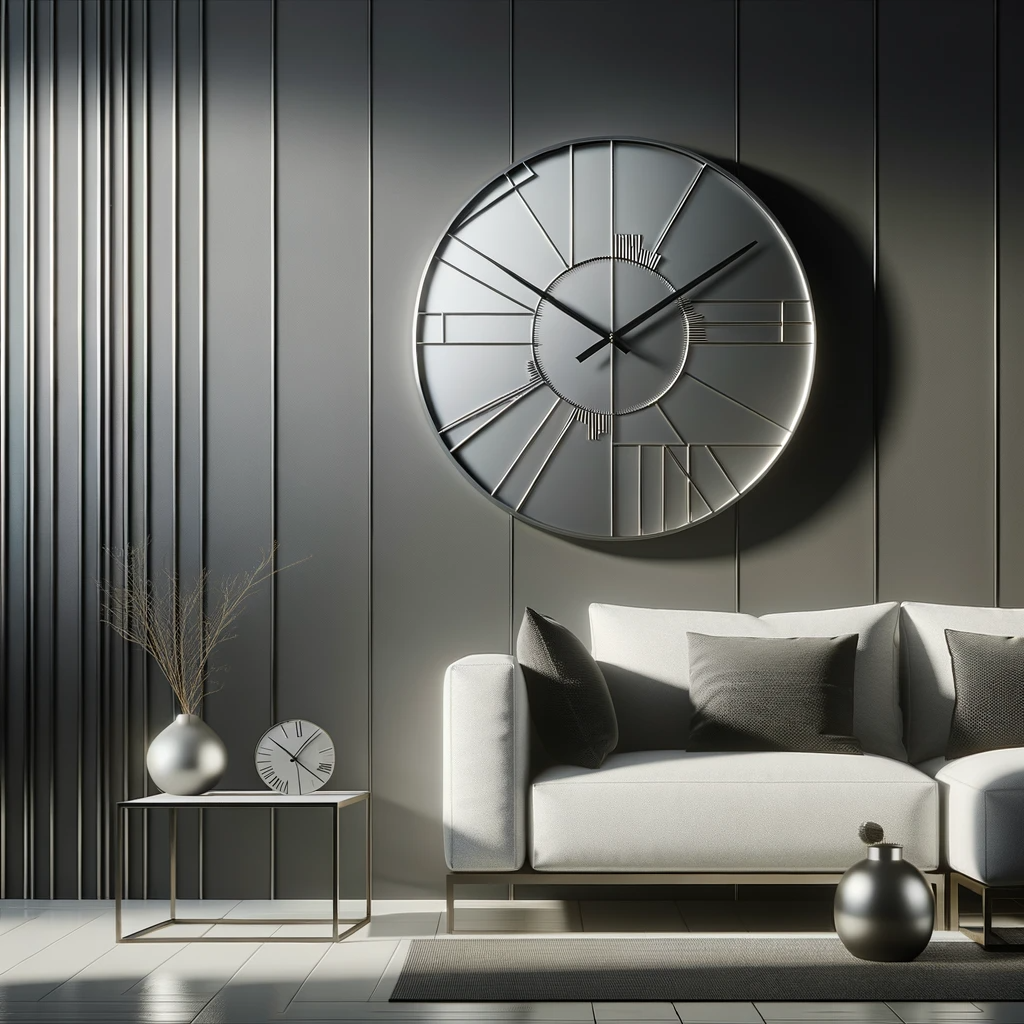
Over time, wall clock designs have evolved from traditional styles to encompass modern and contemporary aesthetics. Traditional designs often featured ornate details such as carved woodwork and intricate patterns. However, with changing design trends came the demand for simpler forms that aligned with modern lifestyles.
The transition towards modern and contemporary designs brought about streamlined shapes, minimalist elements, and a focus on functionality rather than excessive ornamentation.
These new designs emerged in response to the desire for clean lines, less cluttered visual spaces, and a harmonious integration into various interior styles.
Through this transition, wall clocks have become more than just timekeeping instruments; they are now expressive art objects that reflect personal style and contribute to the overall ambiance of a room.
Evolution of Wall Clocks
Sundials and Water Clocks in Ancient Civilizations
Ancient civilizations devised ingenious ways to measure time, using sundials and water clocks. They placed sundials outdoors, taking advantage of the sun’s position to determine the time of day. Sundials consisted of a flat plate with a gnomon that cast a shadow onto the dial, indicating the hour.
Similarly, water clocks used the flow or level of water to measure time. These early timekeeping devices provided primitive but essential tools for tracking daylight hours.
Mechanical Clocks in Medieval Europe
During medieval times, mechanical clocks emerged in Europe as a significant step forward in timekeeping technology. These ornate and elaborate clocks featured intricate gears and mechanisms driven by weights or springs.
Medieval mechanical clocks were typically installed in church towers and public spaces, ensuring that townspeople could hear the chimes announce each passing hour. These early mechanical clocks were manually wound and only indicated hours rather than minutes or seconds.
Introduction of Pendulum Clocks in the 17th Century
In the 17th century, Christian Huygens invented the pendulum clock—a remarkable advancement that improved accuracy and precision in timekeeping. The use of a pendulum reduced errors caused by external factors such as changes in temperature or air pressure.
The swinging motion regulated by gravity allowed these clocks to keep consistent time measurements over long periods. This marked a crucial milestone in horology and laid the foundation for more accurate future clock designs.
Industrial Revolution and Rise of Mass-Produced Wall Clocks
With the advent of industrialization during the 19th century’s Industrial Revolution, wall clock production underwent significant transformations. Mass production techniques enabled manufacturers to meet growing market demands efficiently while lowering costs. Large-scale factories began producing affordable wall clocks, making them accessible to a wider range of consumers.
This shift led to clock ownership becoming more widespread and turned wall clocks into essential household items around the world. The industrial revolution also spurred innovations in clock construction and design, setting the stage for the development of modern and contemporary wall clocks.
Characteristics of Modern Wall Clocks
Minimalist design principles influenced by Bauhaus movement
Modern wall clocks follow the minimalist design principles that were popularized by the influential Bauhaus movement. These clocks embrace simplicity and eliminate unnecessary ornamentation, focusing on clean lines and uncluttered aesthetics. They aim to create a sense of harmony and balance through their sleek and understated designs.
Clean lines and geometric shapes
Modern wall clocks prominently feature clean lines and geometric shapes in their designs. Straight lines, right angles, and symmetrical patterns are commonly seen in the form of rectangular or circular clock faces. This emphasis on geometric elements enhances the overall visual appeal while also contributing to a sense of order and organization.
Use of primary colors or monochromatic palettes
In line with the minimalist approach, modern wall clocks often employ primary colors or monochromatic palettes. Vibrant hues like red, yellow, and blue may be used individually or in combination to add a bold touch to the clock’s appearance. Alternatively, monochromatic schemes involving shades of gray or neutral tones create an elegant and sophisticated look that seamlessly blends with any interior décor.
Incorporation of new materials such as glass, metal, and plastic
Modern wall clocks showcase a diverse range of materials beyond traditional wood. Glass is frequently utilized for clock faces due to its transparency properties that provide clear visibility while adding a sleek touch.
Metal accents are common too; stainless steel frames or chrome finishes offer a contemporary appeal. Plastic components may be employed for lightweight construction without compromising durability.
Emphasis on functionality with clear visibility and accurate timekeeping
Functionality is paramount in modern wall clocks as they prioritize not only aesthetic appeal but also accurate timekeeping. Clear visibility is ensured through features like bold numerals or markers, high contrast colors, and legible hands.
Precise movements like quartz or atomic mechanisms provide accurate timekeeping to meet the demands of modern lifestyles. These clocks are designed to be reliable timekeepers while simultaneously enhancing the overall visual experience in any space.
Contemporary Wall Clock Designs
Abstract Expressionism: Bold Colors, Irregular Shapes, and Textures
Wall clocks inspired by abstract expressionism offer a vibrant and dynamic aesthetic. These designs feature bold colors that command attention and evoke strong emotions. The use of irregular shapes breaks away from traditional clock designs, adding an element of unpredictability.
Textures play a significant role in creating depth and visual interest, with materials like brushed metal or textured glass being incorporated. These clocks become focal points in any room, showcasing the freedom of artistic expression through unique combinations of colors, shapes, and textures.
Pop Art: Vibrant Hues, Playful Motifs, and Unconventional Materials
Drawing inspiration from the pop art movement, contemporary wall clocks infuse spaces with energy and playfulness. Vibrant hues dominate these designs, bringing out a sense of joy and excitement. Clocks may feature playful motifs such as cartoon characters or iconic symbols that reflect popular culture references.
Unconventional materials like plexiglass or recycled objects are often used to create a distinctive look. These clocks act as eye-catching statement pieces that showcase the intersection of art and everyday objects while injecting a sense of fun into any space.
Surrealism: Dreamlike Elements, Distorted Forms, and Unexpected Details
Surrealist-inspired wall clocks transport viewers into dreamlike realms with their unconventional designs. Distorted forms challenge traditional notions of shape while adding an element of intrigue.
Clocks influenced by surrealism often incorporate unexpected details such as melting elements or floating numbers to create an otherworldly atmosphere. By defying conventional expectations and embracing the subconscious mind’s creativity, these clocks blur the line between reality and imagination.
Cubism: Fragmented Geometrical Patterns and Overlapping Planes
Wall clocks inspired by the cubist movement feature fragmented geometrical patterns and overlapping planes that create a sense of depth and dimension. Clock faces may be divided into multiple sections, each showcasing a different perspective of time.
These designs aim to represent various viewpoints simultaneously, challenging our perception of time as a linear concept. The use of angular shapes and sharp lines gives these clocks a distinct modern aesthetic, making them stand out as works of art in their own right.
Incorporating elements from abstract expressionism, pop art, surrealism, and cubism, contemporary wall clock designs push the boundaries of traditional timekeeping objects. Through their unique forms and artistic influences, these clocks not only serve as practical tools but also make profound statements about individuality and creativity in the modern world.
Innovative Features in Modern Wall Clocks
Integration with Smart Technology: Enhancing Functionality
Modern wall clocks have embraced the advancements of smart technology, revolutionizing their functionality. Bluetooth connectivity allows these clocks to seamlessly integrate with other devices. Users can sync their wall clock with their smartphones or tablets to stream music or receive phone notifications directly through the clock.
This feature creates a more immersive and interactive experience, blurring the boundaries between traditional timekeeping and digital connectivity. Voice control options further enhance the convenience of modern wall clocks by enabling hands-free operation.
With simple voice commands, users can adjust settings, change display modes, or even ask for the time without having to physically interact with the clock. By incorporating voice assistants like Siri or Alexa, these smart wall clocks offer a new level of ease and accessibility in our daily lives.
Energy-Efficient Mechanisms: Embracing Sustainability
In response to growing environmental concerns, modern wall clocks have embraced energy-efficient mechanisms as a sustainable approach to timekeeping. Solar-powered wall clocks harness sunlight as an energy source. They feature solar panels discreetly integrated into their design that convert light into power for smooth and uninterrupted operation.
This innovative approach not only reduces dependence on conventional batteries but also promotes eco-friendly practices. In addition to solar power, kinetic movements have gained popularity in modern wall clocks.
These mechanisms utilize motion and kinetic energy generated by natural movements such as walking or swinging the pendulum to power the clock’s mechanism. By harnessing human motion rather than relying on external power sources, kinetic-powered wall clocks promote sustainability while adding an element of interactivity.
Unique Features: Adding Style and Sophistication
Modern wall clocks offer unique features that go beyond traditional timekeeping functionalities and add aesthetic appeal to any space. Silent sweep movements replace traditional ticking sounds with virtually noiseless operations. This feature ensures a quiet environment and eliminates any distractions caused by audible ticking, making these clocks ideal for bedrooms, offices, or libraries.
Projection displays take wall clocks to new dimensions by offering unconventional ways of displaying time. These clocks use advanced technology to project the time onto walls or ceilings, creating an eye-catching visual display that becomes a focal point in any room.
Projection displays can vary in style and complexity, with some clocks projecting oversized numbers while others produce elegant and artistic patterns. In embracing integration with smart technology, energy-efficient mechanisms, and unique features, modern wall clocks have evolved into more than just timekeeping devices – they are now sophisticated and functional pieces of art that enhance our daily lives.
Conclusion
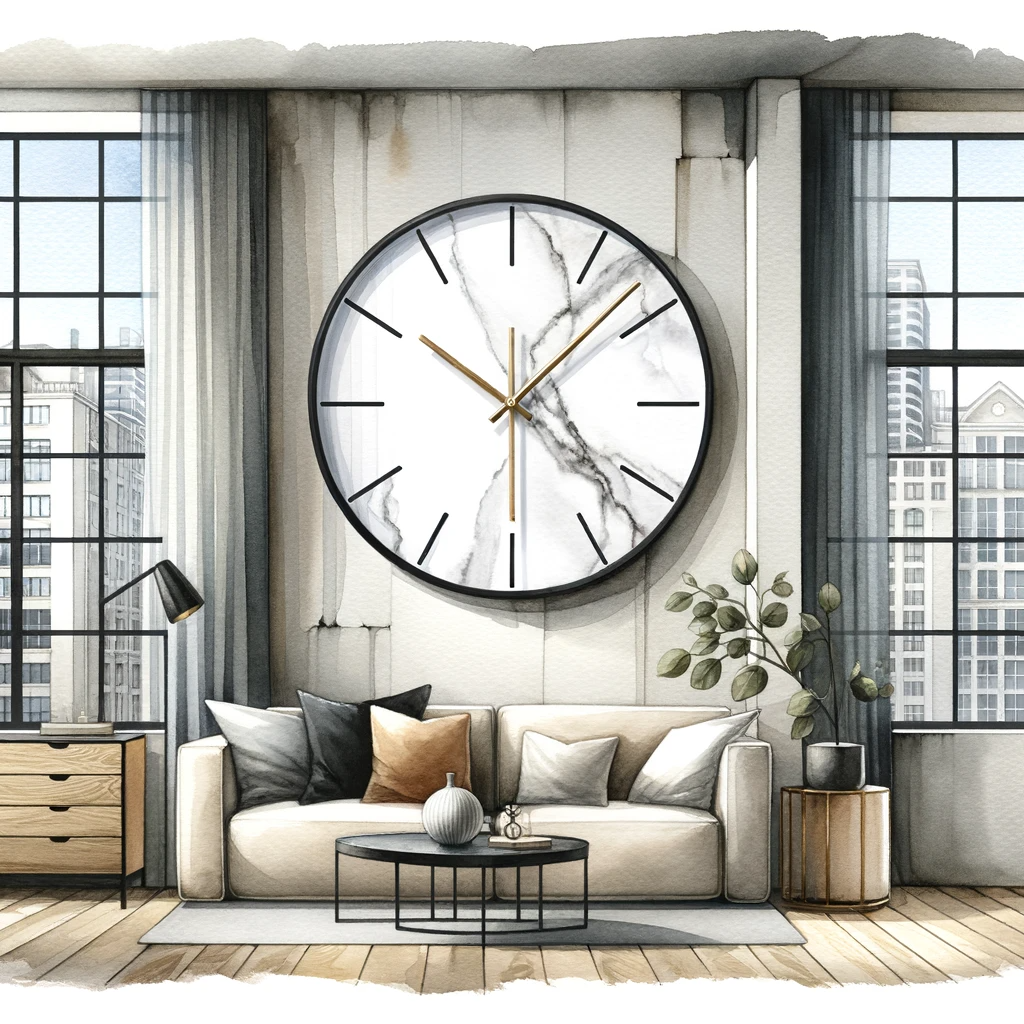
Preserving Time with Modern and Contemporary Wall Clocks
Wall clocks have transcended their traditional purpose of timekeeping to become captivating focal points of modern interior design. The evolution of wall clocks from ancient sundials to the sleek and innovative designs of today showcases the progress of human ingenuity and creativity.
The minimalist characteristics prevalent in modern wall clocks, influenced by the Bauhaus movement, emphasize clean lines, geometric shapes, and a harmonious blend of form and function. The use of materials like glass, metal, and plastic further enhances their contemporary appeal.
The Artistic Expression in Contemporary Wall Clocks
Contemporary wall clock designs draw inspiration from a wide array of art movements to create stunning pieces that captivate with their artistic expression. Abstract expressionism introduces bold colors, irregular shapes, and textured surfaces that evoke emotions and create visual interest.
Pop art infuses vibrancy through playful motifs, unconventional materials, and a sense of fun. Surrealism challenges conventional design with dreamlike elements, distorted forms, and unexpected details that invite contemplation.
Cubism takes fragmented geometrical patterns and overlapping planes to create abstract compositions that challenge our perception. Modern and contemporary wall clocks not only serve as functional timekeeping devices but also act as works of art that enhance our living spaces with their aesthetic appeal.
With innovative features like smart technology integration or energy-efficient mechanisms, these timepieces continue to evolve while preserving the essence of timeless design principles. By appreciating the fusion of functionality and beauty in these clock designs, we can embrace the passage of time with optimism while enjoying the artistic expression they bring into our lives.



